It took a good two and a half hours to get from my hotel up to our breakfast stop. We had to stop frequently on the way up to pick up the other nine people on my tour at their various hotels in Kuta and Ubud. Ubud looks phenomenal. If I had more time in Bali I would plan on staying there for a few nights. This small town is lined with spas, yoga studios, art galleries, restaurants, and shops. The town is covered with flowers and lush foliage. This is the sort of place where you go to really unwind and appreciate the natural beauty of the island. Unfortunately, I was only able to drive through it. Another stop we made on the way up was at the steeply terraced rice paddies below. It was just a photo op, but a beautiful one to be certain.
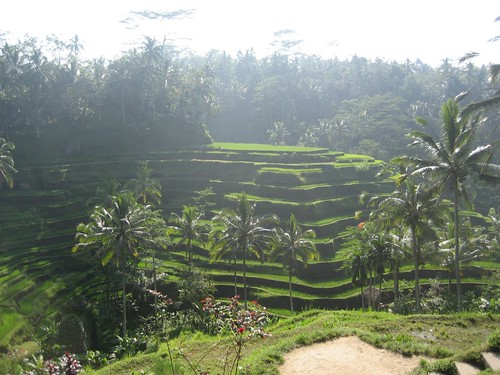
As mentioned, our tour started with a breakfast. We filled up on pancakes, fried rice, and fresh fruit at a restaurant high on a hill overlooking Mt. Batur and its crater lake. Mt. Batur is an active volcano and you can still see a black lava field from the eruption in 1994. The view was spectacular. After living in flat places for so long I am always very happy to see mountains.
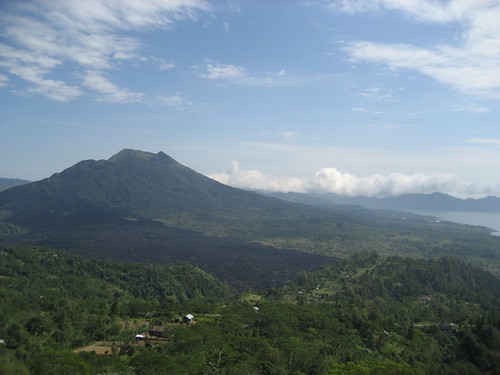
We made one more stop before getting on our bikes. This stop was at a coffee plantation where Luwak Coffee is made. Luwak Coffee is the most expensive coffee in the world. Our guide, Made, delighted in telling us that it has become much more popular recently after being mentioned in the movie "The Bucket List." Morgan Freeman and Jack Nicholson inadvertently pumped life into the industry! I'm not a coffee drinker, but I found the process used to create this type of coffee to be fascinating. Step one involves this furry animal called a civet consuming bright red Arabica coffee beans.

The civets are incredibly picky and will only eat the most perfect berries. I found it interesting that these animals are wild, the plantation will only keep them in cages for a few weeks at a time at most. They want the population on the island to thrive, so they try to treat them and their habitat with as much care as possible. Step two is the dirty part. Someone has the happy job of collecting civet poop and combing through it to find the beans. After the beans are cleaned they are roasted by hand over a woodburning fire and then ground coarsely.
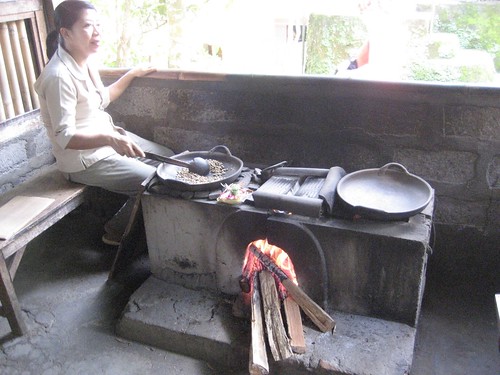
Holding a "processed" bean in your hand you are amazed by how light it is-- both in color and in weight. Nutrients are stripped from the bean when it is digested by the civet.
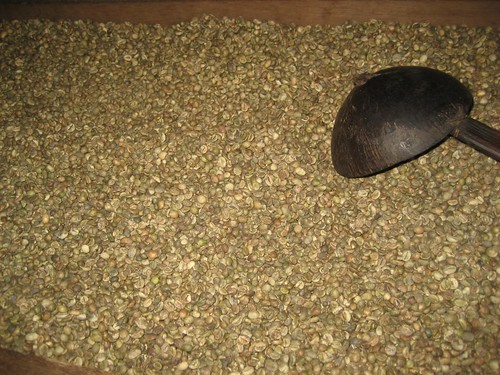
I was able to sample some of the coffee but I cannot really comment on it as I am not a coffee drinker. When I looked at the price of the coffee online (here) it looks as though a half pound will sent you back $120.
After the coffee plantation we hit the road. Our bike ride was almost entirely downhill for 25 km. Knowing now how hilly Bali is, I'm impressed that they managed to find such a long stretch that is all downhill. The road could be treacherous at points- covered with potholes and gravel, but the ride was really not very difficult.

The first stop on our tour was a visit to a traditional family compound. Although I’m a bit uncomfortable with the exploitative nature of paying to go through a family residence, I feel like this is where I really learned the most about traditional Balinese life. The family relationship structure in Bali is patrilocal, which means that the sons of the family live in the compound with their wives while the daughters move to the compounds of their husbands. In cases where a father has only daughters, a daughter and her husband will be asked to stay on in order to keep the home in the family. The tour guide told us that almost all Balinese live in this way. He lives with his family in a compound in the south of the island. Compounds are kept in families for generations. Apparently many Balinese are now trying to get written deeds for their land. As the popularity of the little island grows, so do property disputes. The compound we visited had four families living in it. Each family has their own little house within the walls and each wife has her own kitchen. Apparently having to share one kitchen would cause the wives to fight. I peeked inside one of these kitchens and this is what I saw:
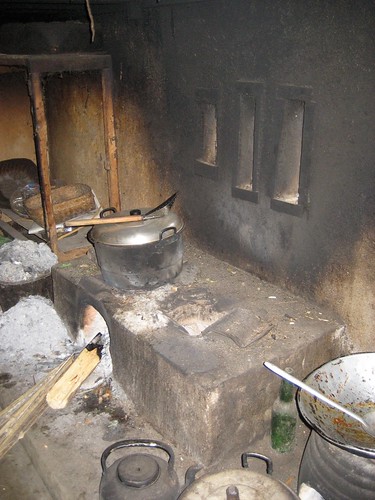
My camera used its flash so you can’t really get a very good idea of how dark and spooky the little space was. What made it even worse is that there is no chimney—something that has apparently been added on to more modern kitchens—just these three slats in the wall. I can only imagine how smoky it would be in there with a wood fire and not enough ventilation! We also learned that Balinese do not sit down to family meals. In the morning the wife will cook up a bunch of food and then people will come and grab it as they please throughout the day. The family does gather together at the end of the day in their family temple:
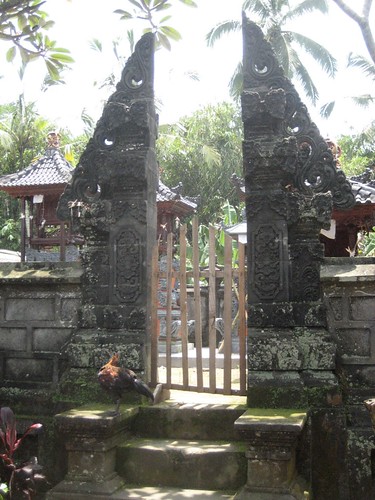
The family temple has a little gate to reach it. Inside there are many little shrines where Balinese place offerings daily. The shrines reminded me of the Thai spirit houses that are on the property of all buildings here. Every compound has a temple located in the northeast corner of the compound. Once I got to my hotel that night I tested out this fact, sure enough, there was a temple tucked away in the northeast corner!
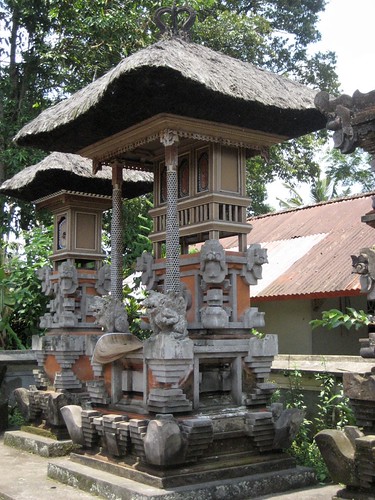
While in the compound we were shown the outhouses, the livestock, and the gardens. Similar to the families of the hilltribe I stayed with in Vietnam, each little compound tries to be as self-sufficient as possible.
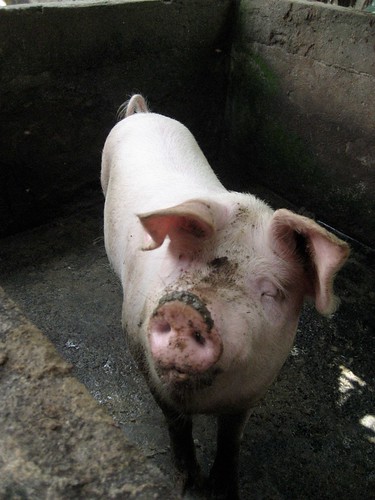
In addition to the little houses for each family there are other buildings that serve as common space for ceremonies, weaving, storage, etc. Made told us that until recently many compounds used asbestos-filled roofing—they completely missed the memo about how toxic they can be. He told us that he only learned recently from a tourist that asbestos are illegal in most countries. Now they are trying to transition back over to woven bamboo roofs. We saw several women slicing up bamboo in order to make weaving strips from the core. Apparently the core is more waterproof that if you used the outside of the bamboo.
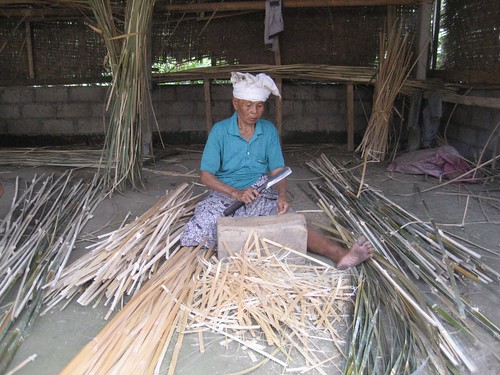
An interesting thing we noticed while leaving the compound were these Absolut Vodka bottles lined up at a little store on the street. This is how you refill your gas in Bali. Gasoline needs to be stored in very thick glass and the easiest thick-glassed bottles to come by are Absolut Vodka. Also, having to drink a bottle of vodka in order to reuse it for gas storage is just more fun than buying bottles.
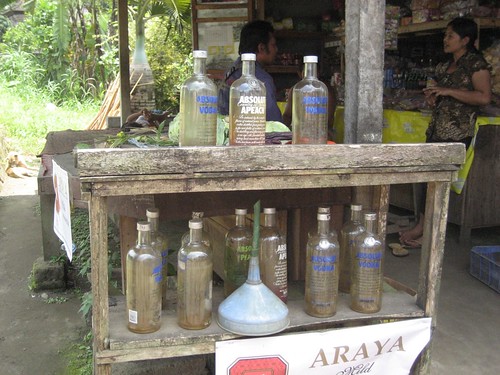
After the compound we got back on our bikes and headed downhill. Our next stop was one of the gorgeous terraced rice paddies that lined the sides of the road. We dismounted our bikes and strolled out into the paddies to get a closer look at the work that some women were doing out in the fields. The women were using long handled rakes to turn over the mud in the paddies, mixing up all of the nutrients and weeding as they went. Although rice paddies dominate the scenery in Bali, very little of the rice produced there is exported. There is little profit to be made for selling the rice so most families just cultivate their plots and then use the rice produced for their own meals.
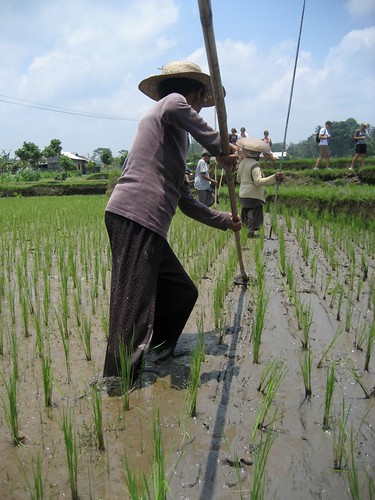

We had another stop at what was possibly the most enormous banyan tree I have ever seen. It was impossible to fit the entire thing into a picture.
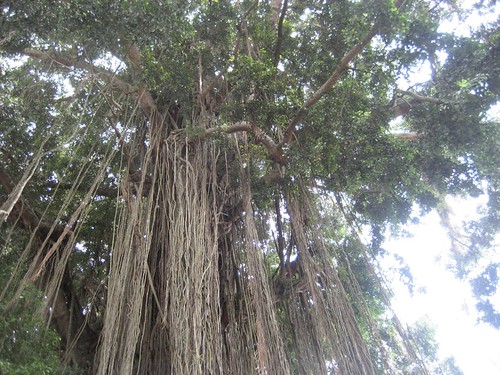

After completing 25 km of biking we were given two options. Option 1: Get into the follow van and drive to their headquarters for our lunch. Option 2: bike another 9 km uphill to said lunch. I was one of four people who manned up for the bike ride back to the place. The ride was brutal. The sun was boiling, the hills were steep, and the roads were just as pothole covered as before. It was fantastic to arrive at the massive Balinese lunch at the end.
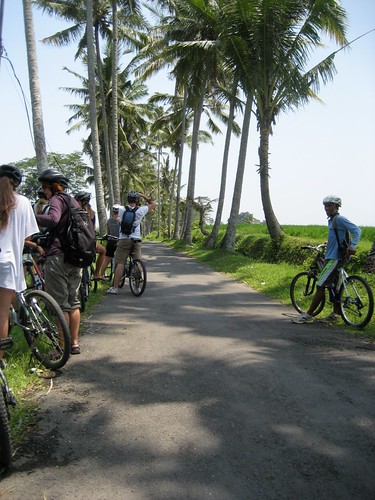
I highly recommend this tour to anyone who has a full day to kill in Bali. As a solo traveler it was an especially good choice. I was in good company all day long. Everyone was curious about the random American girl who lived in Bangkok! They were all shocked that my trip was only two days long!
The traffic on Bali is terrible, so I didn’t make it back to my hotel until around 5:30. I spent the rest of my evening wandering up and down the main drag from Legian to Seminyak, checking out the shopping. I didn’t manage to find a swimsuit to my liking but I did come away with a new sundress as a souvenir. I ate a delicious Balinese fried rice dish for dinner and the rest of my evening watching Project Runway on the TV in my room. Now that is a vacation!
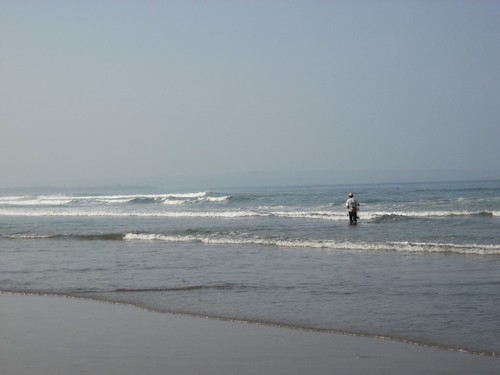
I headed for the airport after one last dip in the sea the next morning. My trip was altogether too short, but I feel like I was able to great idea of what makes Bali such a special place. I know that Thailand is the “Land of Smiles,” but I was struck by how genuinely nice the Balinese people are. They are constantly trying to make conversation, trying to learn about you, trying to make you feel at home. I found the culture of these people to be fascinating and I really hope that I have the opportunity to revisit the island one day!

I've been reading about a lot of different cultures lately for my anthropology class, so I found your description of Bali family life particularly interesting. Do you know if Bali culture is patrilineal?
ReplyDeleteI hadn't realized it was only two days. That's awesome. Cheap ticket?
ReplyDeleteLindsey-- I knew that they were patrilocal but wasn't sure about patrilineal-- googled it and they are. Their culture is so fascinating, I think I'm going to have to buy a book or something to learn more.
ReplyDeleteMatt-- Just over 3000 b. Had to do it.
This was a really fantastic post! You've got talent as a traveler. Watch out for civets to be the next in gift.
ReplyDelete